Poly(ADP-ribose) polymerase (PARP) inhibitors for the treatment of ovarian cancer
- PMID: 35170751
- PMCID: PMC8848772
- DOI: 10.1002/14651858.CD007929.pub4
Poly(ADP-ribose) polymerase (PARP) inhibitors for the treatment of ovarian cancer
Abstract
Background: Ovarian cancer is the sixth most common cancer in women world-wide. Epithelial ovarian cancer (EOC) is the most common; three-quarters of women present when disease has spread outside the pelvis (stage III or IV). Treatment consists of a combination of surgery and platinum-based chemotherapy. Although initial responses to chemotherapy are good, most women with advanced disease will relapse. PARP (poly (ADP-ribose) polymerase) inhibitors (PARPi), are a type of anticancer treatment that works by preventing cancer cells from repairing DNA damage, especially in those with breast cancer susceptibility gene (BRCA) variants. PARPi offer a different mechanism of anticancer treatment from conventional chemotherapy.
Objectives: To determine the benefits and risks of poly (ADP-ribose) polymerase) inhibitors (PARPi) for the treatment of epithelial ovarian cancer (EOC).
Search methods: We identified randomised controlled trials (RCTs) by searching the Cochrane Central Register of Controlled Trials (Central 2020, Issue 10), Cochrane Gynaecological Cancer Group Trial Register, MEDLINE (1990 to October 2020), Embase (1990 to October 2020), ongoing trials on www.controlled-trials.com/rct, www.clinicaltrials.gov, www.cancer.gov/clinicaltrials, the National Research Register (NRR), FDA database and pharmaceutical industry biomedical literature.
Selection criteria: We included trials that randomised women with EOC to PARPi with no treatment, or PARPi versus conventional chemotherapy, or PARPi together with conventional chemotherapy versus conventional chemotherapy alone.
Data collection and analysis: We used standard Cochrane methodology. Two review authors independently assessed whether studies met the inclusion criteria. We contacted investigators for additional data. Outcomes included overall survival (OS), objective response rate (ORR), quality of life (QoL) and rate of adverse events.
Main results: We included 15 studies (6109 participants); four (3070 participants) with newly-diagnosed, advanced EOC and 11 (3039 participants) with recurrent EOC. The studies varied in types of comparisons and evaluated PARPi. Eight studies were judged as at low risk of bias in most of the domains. Quality of life data were generally poorly reported. Below we present six key comparisons. The majority of participants had BRCA mutations, either in their tumour (sBRCAmut) and/or germline (gBRCAmut), or homologous recombination deficiencies (HRD) in their tumours. Newly diagnosed EOC Overall, four studies evaluated the effect of PARPi in newly-diagnosed, advanced EOC. Two compared PARPi with chemotherapy and chemotherapy alone. OS data were not reported. The combination of PARPi with chemotherapy may have little to no difference in progression-free survival (PFS) (two studies, 1564 participants; hazard ratio (HR) 0.82, 95% confidence interval (CI 0).49 to 1.38; very low-certainty evidence)(no evidence of disease progression at 12 months' 63% with PARPi versus 69% for placebo). PARPi with chemotherapy likely increases any severe adverse event (SevAE) (grade 3 or higher) slightly (45%) compared with chemotherapy alone (51%) (two studies, 1549 participants, risk ratio (RR) 1.13, 95% CI 1.07 to 1.20; high-certainty evidence). PARPi combined with chemotherapy compared with chemotherapy alone likely results in little to no difference in the QoL (one study; 744 participants, MD 1.56 95% CI -0.42 to 3.54; moderate-certainty evidence). Two studies compared PARPi monotherapy with placebo as maintenance after first-line chemotherapy in newly diagnosed EOC. PARPi probably results in little to no difference in OS (two studies, 1124 participants; HR 0.81, 95%CI 0.59 to 1.13; moderate-certainty evidence) (alive at 12 months 68% with PARPi versus 62% for placebo). However, PARPi may increase PFS (two studies, 1124 participants; HR 0.42, 95% CI 0.19 to 0.92; low-certainty evidence) (no evidence of disease progression at 12 months' 55% with PARPi versus 24% for placebo). There may be an increase in the risk of experiencing any SevAE (grade 3 or higher) with PARPi (54%) compared with placebo (19%)(two studies, 1118 participants, RR 2.87, 95% CI 1.65 to 4.99; very low-certainty evidence), but the evidence is very uncertain. There is probably a slight reduction in QoL with PARPi, although this may not be clinically significant (one study, 362 participants; MD -3.00, 95%CI -4.48 to -1.52; moderate-certainty evidence). Recurrent, platinum-sensitive EOC Overall, 10 studies evaluated the effect of PARPi in recurrent platinum-sensitive EOC. Three studies compared PARPi monotherapy with chemotherapy alone. PARPi may result in little to no difference in OS (two studies, 331 participants; HR 0.95, 95%CI 0.62 to 1.47; low-certainty evidence) (percentage alive at 36 months 18% with PARPi versus 17% for placebo). Evidence is very uncertain about the effect of PARPi on PFS (three studies, 739 participants; HR 0.88, 95%CI 0.56 to 1.38; very low-certainty evidence)(no evidence of disease progression at 12 months 26% with PARPi versus 22% for placebo). There may be little to no difference in rates of any SevAE (grade 3 or higher) with PARPi (50%) than chemotherapy alone (47%) (one study, 254 participants; RR 1.06, 95%CI 0.80 to 1.39; low-certainty evidence). Four studies compared PARPi monotherapy as maintenance with placebo. PARPi may result in little to no difference in OS (two studies, 560 participants; HR 0.88, 95%CI 0.65 to 1.20; moderate-certainty evidence)(percentage alive at 36 months 21% with PARPi versus 17% for placebo). However, evidence suggests that PARPi as maintenance therapy results in a large PFS (four studies, 1677 participants; HR 0.34, 95% CI 0.28 to 0.42; high-certainty evidence)(no evidence of disease progression at 12 months 37% with PARPi versus 5.5% for placebo). PARPi maintenance therapy may result in a large increase in any SevAE (51%) (grade 3 or higher) than placebo (19%)(four studies, 1665 participants, RR 2.62, 95%CI 1.85 to 3.72; low-certainty evidence). PARPi compared with chemotherapy may result in little or no change in QoL (one study, 229 participants, MD 1.20, 95%CI -1.75 to 4.16; low-certainty evidence). Recurrent, platinum-resistant EOC Two studies compared PARPi with chemotherapy. The certainty of evidence in both studies was graded as very low. Overall, there was minimal information on the QoL and adverse events.
Authors' conclusions: PARPi maintenance treatment after chemotherapy may improve PFS in women with newly-diagnosed and recurrent platinum-sensitive EOC; there may be little to no effect on OS, although OS data are immature. Overall, this is likely at the expense of an increase in SevAE. It is disappointing that data on quality of life outcomes are relatively sparse. More research is needed to determine whether PARPi have a role to play in platinum-resistant disease.
Trial registration: ClinicalTrials.gov NCT01968213 NCT02822157 NCT00628251 NCT01306032 NCT02446600 NCT01847274 NCT01081951 NCT01844986 NCT01874353 NCT00753545 NCT03314740 NCT01891344.
Copyright © 2022 The Cochrane Collaboration. Published by John Wiley & Sons, Ltd.
Conflict of interest statement
AT ‐ no conflict of interest declared. NR ‐ no conflict of interest declared. AW ‐ no conflict of interest declared. ER ‐ no conflict of interest declared. JM ‐ no conflict of interest declared.
Figures

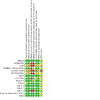


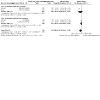
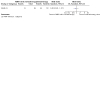













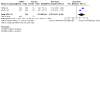
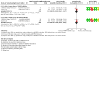
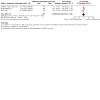
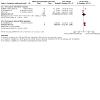

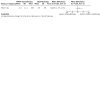
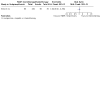
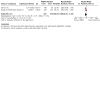

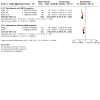
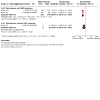
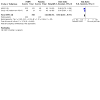
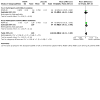
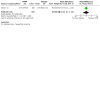
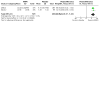
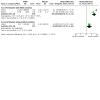
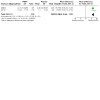
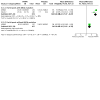
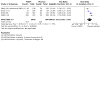

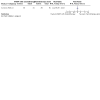
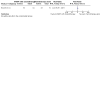




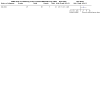
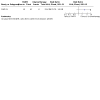
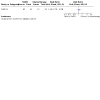
Update of
-
Poly(ADP-ribose) polymerase (PARP) inhibitors for the treatment of ovarian cancer.Cochrane Database Syst Rev. 2015 May 20;2015(5):CD007929. doi: 10.1002/14651858.CD007929.pub3. Cochrane Database Syst Rev. 2015. Update in: Cochrane Database Syst Rev. 2022 Feb 16;2:CD007929. doi: 10.1002/14651858.CD007929.pub4. PMID: 25991068 Free PMC article. Updated.
References
References to studies included in this review
ARIEL3 {published data only}
-
- A study of rucaparib as switch maintenance following platinum-based chemotherapy in patients with platinum-sensitive, high-grade serous or endometrioid epithelial ovarian, primary peritoneal or fallopian tube cancer (ARIEL3). ClinicalTrials.gov website 6 April 2015. [https://clinicaltrials.gov/ct2/show/NCT01968213?term=NCT01968213&rank=1]
-
- Coleman RL, Oza AM, Lorusso D, Aghajanian C, Oaknin A, Dean A, et al.ARIEL3: a phase 3, randomized, double-blind study of rucaparib vs placebo following response to platinum-based chemotherapy for recurrent ovarian cancer (OC). Clinical Cancer Research 2018;24(15):625.
-
- Coleman RL, Oza AM, Lorusso D, Aghajanian C, Oaknin A, Dean A, et al.ARIEL3: a phase 3, randomized, double-blind study of rucaparib vs placebo following response to platinum-based chemotherapy for recurrent ovarian cancer (OC). In: Clinical Cancer Research. Vol. Conference: AACR Special Conference "Addressing Critical Questions in Ovarian Cancer Research and Treatment". United States. 24. 2018:PR06.
-
- Coleman RL, Oza AM, Lorusso D, Aghajanian C, Oaknin A, Dean A, et al.Rucaparib maintenance treatment for recurrent ovarian carcinoma after response to platinum therapy (ARIEL3): a randomised, double-blind, placebo-controlled, phase 3 trial [Erratum appears in Lancet. 2017 Oct 28;390(10106):1948; PMID: 29115226]. Lancet 2017;390(10106):1949-61. - PMC - PubMed
-
- Coleman RL, Oza AM, Lorusso D, Aghajanian C, Oaknin A, Dean A, Colombo N, et aa, ARIEL3 investigators CNO - CN-01643386.Rucaparib maintenance treatment for recurrent ovarian carcinoma after response to platinum therapy (ARIEL3): a randomised, double-blind, placebo-controlled, phase 3 trial [Erratum appears in Lancet. 2017 Oct 28;390(10106):1948; PMID: 29115226]. Lancet (london, England) 2017;390(10106):1949-61. [DOI: 10.1016/S0140-6736(17)32440-6] - DOI - PMC - PubMed
AVANOVA2 {published data only}
-
- Mirza MR, Åvall Lundqvist E, Birrer MJ, dePont Christensen R, Nyvang GB, Malander S, et al, for the AVANOVA investigators.Niraparib plus bevacizumab versus niraparib alone forplatinum-sensitive recurrent ovarian cancer(NSGO-AVANOVA2/ENGOT-ov24): a randomised, phase 2,superiority trial. Lancet Oncololgy 2019;20(10):1409–19. [DOI: 10.1016/ S1470-2045(19)30515-7] - PubMed
CLIO {published data only}
-
- Callewaert T, Vanderstichele A, Van Nieuwenhuysen E, Han S, Concin N, Van Gorp T, et al.Quality-of-life analysis in the randomized phase ii CLIO trial comparing olaparib with standard chemotherapy in platinum-resistant recurrent ovarian cancer. International Journal of Gynecological Cancer 2019;29:A129-30.
-
- NCT02822157.Circulating tumor DNA guiding (Olaparib) Lynparza® treatment in ovarian cancer. Clinical Trials. gov Register 2016.
-
- Vanderstichele A, Loverix L, De Vogelaere C, Heyrman L, Van Gorp T, Van Nieuwenhuysen E, et al.Response to olaparib monotherapy in relapsed ovarian cancer by HRR gene mutational status and HRD scarring analysis: results from the randomized phase II CLIO trial. Annals of Oncology 2020;31(Supplement 4):S617-S618.
-
- Vanderstichele A, Van Nieuwenhuysen E, Han S, Concin N, Van Gorp T, Berteloot P, et al.Randomized phase II CLIO study on olaparib monotherapy versus chemotherapy in platinum-resistant ovarian cancer. Journal of Clinical Oncology 2019;37(15_supp):5507.
ICEBERG 3 (Kaye 2012) {published and unpublished data}
-
- Kaye SB, Lubinski J, Matulonis U, Ang J E, Gourley C, Karlan BY, et al.Phase II, open-label, randomized, multicenter study comparing the efficacy and safety of olaparib, a poly (ADP-ribose) polymerase inhibitor, and pegylated liposomal doxorubicin in patients with BRCA1 or BRCA2 mutations and recurrent ovarian cancer. Journal of Clinical Oncology 2012;30(4):372-9. - PubMed
-
- Kaye SB.ICEBERG3. http://clinicaltrials.gov/show/NCT00628251 26 February 2008.
Kummar 2015 {published and unpublished data}
-
- Kummar S, Fleming GF, Oza AM, Sullivan DM, Gandara DR, Naughton M, et al.Randomized trial of oral cyclophosphamide and veliparib in high-grade serous ovarian, primary peritoneal, or fallopian tube cancers, or BRCA-mutant ovarian cancer. Clinical Cancer Research 2015;14:2562. [DOI: 10.1158/1078-0432.CCR-14-2565] - DOI - PMC - PubMed
-
- Kummar S, Oza A, Fleming G, Sullivan D, Gandara D, Erlichman C, et al.Randomized trial of oral cyclophosphamide © with or without veliparib (V), an oral poly (ADP-ribose) polymerase (PARP) inhibitor, in patients with recurrent BRCA-positive ovarian, or primary peritoneal or high-grade serous ovarian carcinoma. 2012 ASCO Annual Meeting. Journal of Clinical Oncology 2012;30(15 Suppl):5020. [http://meetinglibrary.asco.org/content/98169-114]
NCT02446600 {published data only}
-
- Liu J F, Brady MF, Matulonis UA, Miller A, Kohn EC, Swisher EM, et al.A phase III study comparing single-agent olaparib or the combination of cediranib and olaparib to standard platinumbased chemotherapy in recurrent platinum-sensitive ovarian cancer. Journal of Clinical Oncology 2020;15_suppl:6003. [DOI: 10.1200/JCO.2020.38.15_suppl.6003] - DOI
-
- NCT02446600.Olaparib or cediranib maleate and olaparib compared with standard platinum-based chemotherapy in treating patients with recurrent platinum-sensitive ovarian, fallopian tube, or primary peritoneal cancer. Clinicl Trial. gov register 2015.
NOVA {published data only}
-
- Del Campo JM, Matulonis UA, Malander S, Provencher D, Mahner S, Follana P, et al.Niraparib maintenance therapy in patients with recurrent ovarian cancer after a partial response to the last platinum-based chemotherapy in the ENGOT-OV16/NOVA trial. Journal of Clinical Oncology 2019;37(32):2968-73. [DOI: 10.1200/JCO.18.02238] - DOI - PMC - PubMed
-
- Del Campo JM, Mirza MR, Berek JS, Provencher DM, Emons G, Fabbro M, et al.The successful phase 3 niraparib ENGOT-OV16/NOVA trial included a substantial number of patients with platinum-resistant ovarian cancer (OC). Journal of Clinical Oncology 2017;35(15_suppl):5560. [DOI: 10.1200/JCO.2017.35.15_suppl.5560] - DOI
-
- Fabbro M, Moore KN, Dørum A, Tinker AV, Mahner S, Bover I, et al.Efficacy and safety of niraparib as maintenance treatment in older patients (≥ 70 years) with recurrent ovarian cancer: results from the ENGOT-OV16/NOVA trial. Gynecologic Oncology 2019;152(3):560-7. - PubMed
-
- Fabbro M, Moore KN, Dorum A, Tinker AV, Mahner S, Bover I, et al.Safety and efficacy of niraparib in elderly patients (Pts) with recurrent ovarian cancer (OC). Annals of Oncology 2017;28(Supplement 5 [42nd ESMO Congress]):V332.
-
- Lord R, Mirza MR, Woelber L, Lesoin A, Pineda MJ, Peen U, et al.Safety and dose modification for patients with low body weight receiving niraparib in the ENGOT-OV16/NOVA phase III trial. Gynecologic Oncology 2018;149(Supplement 1 [49th Annual Meeting of the Society of Gynecologic Oncology] ):11. [DOI: 10.1016/j.ygyno.2018.04.031] - DOI
Oza 2015 {published and unpublished data}
-
- Oza AM, Cibula D, Benzaquen AO, Poole C, Mathijssen RHJ, Sonke GS et al.Correction to olaparib combined with chemotherapy for recurrent platinum-sensitive ovarian cancer: A randomised phase 2 trial. Lancet Oncology 2015;16(2):e55-erratum to original e-pub paper. [DOI: 10.1016/S1470-2045(15)70044-6] - DOI - PubMed
-
- Oza AM, Cibula D, Oaknin A, Poole C, Mathijssen RHJ, Sonke GS, et al.Olaparib maintenance therapy in patients (pts) with platinum-sensitive relapsed (PSR) ovarian cancer (OC) and stable disease (SD) following platinum-based chemotherapy. Annals of Oncology 2018;29(Supplement 8):viii340.
-
- Oza AM, Cibula D, Oaknin A, Poole CJ, Mathijssen RHJ Sonke GS, et al.Olaparib plus paclitaxel plus carboplatin (P/C) followed by olaparib maintenance treatment in patients (pts) with platinum-sensitive recurrent serous ovarian cancer (PSR SOC): a randomized, open-label phase II study. Journal of Clinical Oncology 2012;30(15 Suppl):5001. [http://meeting.ascopubs.org/cgi/content/abstract/30/15_suppl/5001]
PAOLA‐1 {published data only}
-
- Colombo N, Gantzer J, Ataseven B, Cropet C, Scambia G, Herrero A, et al.Maintenance olaparib + bevacizumab (bev) in patients (pts) with newly diagnosed advanced high-grade ovarian cancer (HGOC): RECIST and/or CA-125 objective response rate (ORR) in the phase III PAOLA-1 trial. Ann Oncol. 2020;31(Supplement 4):S614. [DOI: 10.1016/j.annonc.2020.08.951] - DOI
-
- De Gregorio N, Harter P, Sehouli J, Canzler U, Marme F, Buderath P, et al.Phase III PAOLA-1/ENGOT-OV25 trial: olaparib plus bevacizumab (BEV) as maintenance therapy in patients (PTS) with newly diagnosed, advanced ovarian cancer (OC) treated with platinum-based chemotherapy (PCH) plus BEV. Oncology Resarch and Treatment 2020;43(Supplement 1):93.
-
- EUCTR2014-004027-52-FI.Randomized, double-blind, phase iii trial of olaparib vs. placebo added to bevacizumab in maintenance in patients with advanced ovarian, fallopian tube, or peritoneal cancer after treatment with standard first-line treatment, combining platinum-taxane chemotherapy and concurrent bevacizumab. EU Clinical Trials register 2016.
-
- Fujiwara K, Harter P, Leary A, Perol D, Pignata S, Gonzalez-Martin A, et al.Phase III PAOLA-1/ENGOT-ov25 trial: olaparib plus bevacizumab (bev) as maintenance therapy in patients (pts) with newly diagnosed, advanced ovarian cancer (OC) treated with platinum-based chemotherapy (PCh) plus bev. Annals of Oncology 2019;30(Supplement 9):IX191-2.
-
- Harter P, Mouret-Reynier MA, Pignata S, Cropet C, Gonzalez-Martin A, Bogner G, et al.Phase III PAOLA-1/ENGOT-OV25 trial: olaparib plus bevacizumab as maintenance therapy in patients with newly diagnosed, advanced ovarian cancer treated with platinum-based chemotherapy plus bevacizumab. International Journal of Gynecological Cancer 2019;29(Supplement 4):A10-A11.
PRIMA {published data only}
-
- Gonzalez A, Mirza MR, Vergote I, Li Y, Hazard S, Clark R, et al.A prospective evaluation of tolerability of niraparib dosing based upon baseline body weight (wt) and platelet (blplt) count: blinded pooled interim safety data from the PRIMA Study. In: Annals of Oncology. Vol. 29. 2018:viii335-viii336.
-
- Gonzalez A, Moore KN, Mirza MR, Vergote IB, Pothuri B, Oza AM, et al.A randomized, double-blind phase III trial of niraparib maintenance treatment in patients with HRD+ advanced ovarian cancer after response to front-line platinum-based chemotherapy. In: Gynecologic Oncology. Vol. 145. 2017:98 .
-
- Gonzalez-Martin A, Pothuri B, Vergote I, DePont Christensen R, Graybill W, Mirza MR, et al.Niraparib in patients with newly diagnosed advanced ovarian cancer. New England Journal of Medicine 2019;381(25):2391-402. - PubMed
-
- Gonzalez Martin A, Rojas LA, Braly P, Barter J, O'Malley DM, Oza A, et al.The engot-ov26/prima phase 3 trial: niraparib maintenance treatment in patients with advanced ovarian cancer who responded to front-line platinum-based therapy. In: International Journal of Gynecological Cancer. Vol. Conference: 20th International Meeting of the European Society of Gynaecological Oncology. Austria. 27. 2017:1510.
-
- Gonzalez Martin A, Rojas LA, Braly P, Barter J, O'Malley DM, Oza A, et al.The engot-ov26/prima phase 3 trial: niraparib maintenance treatment in patients with advanced ovarian cancer who responded to front-line platinum-based therapy. International Journal of Gynecolical Cancer 2017;27:1510.
SOLO 1 {unpublished data only}
-
- Banerjee S, Moore KN, Colombo N, Scambia G, Kim B-G, Oaknin A, et al.Maintenance olaparib for patients (pts) with newly diagnosed, advanced ovarian cancer (OC) and a BRCA mutation (BRCAm): 5-year (y) follow-up (f/u) from SOLO1. In: Annals of oncology; Conference: ESMO Virtual Congress 2020. 31(Supplement 4):S613. 2020.
-
- Banerjee S, Moore KN, Colombo N, Scambia G, Kim B-G, Oaknin A, et al.Maintenance olaparib for patients (pts) with newly diagnosed, advanced ovarian cancer (OC) and a BRCA mutation (BRCAm): 5-year (y) follow-up (f/u) from SOLO1. Annals of Oncology 2020;Conference: ESMO Virtual Congress 2020. 31(Supplement 4):S613.
-
- Colombo N, Moore KN, Scambia G, Oaknin A, Friedlander M, Lisyanskaya AS, et al.Adverse events (AEs) with maintenance olaparib in newly diagnosed patients (pts) with advanced ovarian cancer (OC) and a BRCA mutation (BRCAm): phase III SOLO1 trial. Journal of Clinical Oncology 2019;37(Supplement 15):5539.
-
- DiSilvestro P, Colombo N, Scambia G, Kim B-G, Oaknin A, Friedlander M, et al.Efficacy of maintenance olaparib for patients with newly diagnosed advanced ovarian cancer with a BRCA mutation: subgroup analysis findings from the SOLO1 trial. Journal of Clinical Oncology 2020;38(30):3528-37. - PMC - PubMed
-
- DiSilvestro P, Moore K.A phase III, randomised, double blind, placebo controlled, multicentre study of olaparib maintenance monotherapy in patients with BRCA mutated advanced (FIGO stage III-IV) ovarian cancer following first line platinum based chemotherapy. https://clinicaltrials.gov/ct2/show/NCT01844986 2013.
SOLO 2 {unpublished data only}
-
- Frenel J-S, Kim J-W, Berton D, Asher R, Vidal L, Pautier P, et al.Patterns of progression and subsequent management of patients with BRCA1/2 mutated platinum-sensitive recurrent epithelial ovarian cancer (EOC) progressing on olaparib versus placebo: the SOLO2/ENGOT Ov-21 trial (NCT01874353). Journal of Clinical Oncology 2020;Conference: 2020 Annual Meeting of the American Society of Clinical Oncology, ASCO 2020. United States. 38(15):suppl, 6070.
-
- Frenel J-S, Kim J-W, Berton-Rigaud D, Asher R, Vidal L, Pautier P, et al.Efficacy of subsequent chemotherapy for patients with BRCA1/2 mutated platinum-sensitive recurrent epithelial ovarian cancer (EOC) progressing on olaparib vs placebo: the SOLO2/ENGOT Ov-21 trial. In: Annals of Oncology. Vol. Conference: ESMO Virtual Congress 2020. 31. 2020:S615. - PubMed
-
- Friedlander M, Gebski V, Gibbs E, Bloomfield R, Hilpert F, Wenzel LB, et al.Health-related quality of life (HRQOL) and patient-centred outcomes with olaparib maintenance post-chemotherapy in patients with germline BRCA-mutated platinum-sensitive relapsed serous ovarian cancer (PSR SOC). International Journal of Gynecological Cancer 2017;[Conference: 20th International Meeting of the European Society of Gynaecological Oncology. Austria] 27 (Supplement 4):1941.
-
- Friedlander M, Gebski V, Gibbs E, Davies L, Bloomfield R, Hilpert F, et al.Health-related quality of life and patient-centred outcomes with olaparib maintenance after chemotherapy in patients with platinum-sensitive, relapsed ovarian cancer and a BRCA1/2 mutation (SOLO2/ENGOT Ov-21): a placebo-controlled, phase 3 randomised trial. Lancet Oncology 2018;19(8):1126-34. - PMC - PubMed
-
- Friedlander M, Gourley C, Matulonis U, Shirinkin V, Selle F, Scott C, et al.Clinically significant long-term maintenance treatment with olaparib in patients with platinum-sensitive relapsed serous ovarian cancer (PSR SOC). International Journal of Gynecological Cancer. 2017;[Conference: 20th International Meeting of the European Society of Gynaecological Oncology. Austria] 27(Supplement 4):13.
SOLO 3 {published data only}
-
- Penson RT, Valencia RV, Cibula D, Colombo N, Leath III CA, Bidzinski M, Kim JW, Nam JH, Madry R, Hernandez C, Mora PAR, Ryu SY, Milenkova T, Lowe ES, Barker L, Scambia G.Olaparib Versus Nonplatinum Chemotherapy inPatients With Platinum-Sensitive RelapsedOvarian Cancer and a Germline BRCA1/2Mutation (SOLO3): A Randomized Phase III Trial. J Clin Oncol 2020;38:1164-1174. [DOI: 10.1200/JCO.19. 02745] - PMC - PubMed
-
- Penson RT, Valencia RV, Cibula D, Colombo N, Leath CA, Bidzihski M, et al.Olaparib monotherapy versus (vs) chemotherapy for germline BRCA-mutated (gBRCAm) platinum-sensitive relapsed ovarian cancer (PSR OC) patients (pts): phase III SOLO3 trial. Journal of Clinical Oncology 2019;37(15_supp):5506.
Study 19 (Ledermann 2012) {published and unpublished data}
-
- Friedlander M, Matulonis U, Gourley C, du Bois A, Vergote I, Rustin G, et al.Long-term efficacy, tolerability and overall survival in patients with platinum-sensitive, recurrent high-grade serous ovarian cancer treated with maintenance olaparib capsules following response to chemotherapy. British Journal of Cancer. 2018;119(9):1075-85. - PMC - PubMed
-
- Ledermann J, Harter P, Gourley C, Friedlander M, Vergote I, Rustin G, et al.Olaparib maintenance therapy in patients with platinum-sensitive relapsed serous ovarian cancer: A preplanned retrospective analysis of outcomes by BRCA status in a randomised phase 2 trial. Lancet Oncology 2014;15(8):852-61. - PubMed
-
- Ledermann J, Harter P, Gourley C, Friedlander M, Vergote I, Rustin G, et al.Olaparib maintenance therapy in patients with platinum-sensitive relapsed serous ovarian cancer: A preplanned retrospective analysis of outcomes by BRCA status in a randomised phase 2 trial. Obstetrical & Gynecological Survey 2015;69((10)):594-6.
-
- Ledermann J, Harter P, Gourley C, Friedlander M, Vergote I, Rustin G, et al.Olaparib maintenance therapy in patients with platinum-sensitive relapsed serous ovarian cancer: A preplanned retrospective analysis of outcomes by BRCA status in a randomised phase 2 trial. Obstetrical & Gynecological Survey 2015;69(10):594-6.
-
- Ledermann J, Harter P, Gourley C, Friedlander M, Vergote I, Rustin G, et al.Olaparib maintenance therapy in platinum-sensitive relapsed ovarian cancer. New England Journal of Medicine 2012;366(15):1382-92. - PubMed
VELIA {published data only}
-
- Cella D, Bookman M, Steffensen KD, Coleman RL, Dinh M, Khandelwal N, et al.Health-related quality of life (HRQoL) in patients (pts) with newly diagnosed stage III or IV ovarian cancer treated with veliparib (vel) + chemotherapy followed by vel maintenance (maint). Annals of Oncology 2020;31(Supplement 4):S612.
-
- EUCTR2014-005070-11-PL.Veliparib in combination with carboplatin and paclitaxel and as continuation maintenance therapy in subjects with newly diagnosed, untreated Stage III or IV high-grade serous epithelial ovarian, fallopian tube, or primary peritoneal cancer. EU Clinical Trials register 2015.
-
- NCT02470585.Veliparib with carboplatin and paclitaxel and as continuation maintenance therapy in adults with newly diagnosed stage iii or iv, high-grade serous, epithelial ovarian, fallopian tube, or primary peritoneal cancer (VELIA). Clinical Trial Gov register 2015.
-
- NCT02477644.Platine, Avastin and OLAparib in 1st Line (PAOLA-1). Clinical Trials Gov register 2015.
References to studies excluded from this review
Al Hadidi 2018 {published data only}
-
- Al Hadidi S, Aburahma A, Badami S, Upadhaya S.PARP (Poly(ADP-Ribose) Polymerase) inhibitors in platinum-sensitive recurrent ovarian cancer: A meta-analysis of randomized controlled trials. Oncology Research Treatments 2018;41(4):226-35. - PubMed
Audeh 2009 {published data only}
-
- Audeh MW, Penson RT, Friedlander M.Phase II trial of the oral PARP inhibitor olaparib (AZD2281) in BRCA-deficient advanced ovarian cancer. Journal of Clinical Oncology (Meeting Abstracts) 2009;27(15S):5500.
Audeh 2010 {published and unpublished data}
-
- Audeh MW, Carmichael J, Penson RT, Friedlander M, Powell B, Bell-McGuinn KM, et al.Oral poly(ADP-ribose) polymerase inhibitor olaparib in patients with BRCA1 or BRCA2 mutations and recurrent ovarian cancer: a proof-of-concept trial. Lancet 2010;376(9737):245-51. - PubMed
BAROCCO {published data only}
-
- Colombo N, Nicoletto MO, Benedetti Panici P, Tognon G, Bologna A, Lissoni AA, et al.BAROCCO: a randomized phase II study of weekly paclitaxel vs cediranib-olaparib combination given with continuous or intermittent schedule in patients with recurrent platinum resistant ovarian cancer (PROC). In: Conference: 44th ESMO Congress. Spain. 30. 2019:v896.
-
- Colombo N, Nicoletto O, Benedetti Panici P, Tognon G, Lissoni AA, Bologna A, et al.BAROCCO: a randomized phase II study of weekly paclitaxel vs cediranib-olaparib with continuous schedule vs cediranib-olaparib with intermittent schedule in advanced platinum-resistant ovarian cancer. Annals of Oncology 2018;29(Supplement 8):viii357. - PubMed
-
- Colombo N, Nicoletto O, Benedetti Panici P, Tognon G, Lissoni AA, Bologna A, Tomao F, Fossati R, Tettamanzi F, Rulli E, Galli F, Alvisi MF, Torri V, Biagioli E.BAROCCO: a randomized phase II study of weekly paclitaxel vs cediranib-olaparib with continuous schedule vs cediranib-olaparib with intermittent schedule in advanced platinum resistant ovarian cancer. Annals of oncology 2018;Conference: 43rd Congress of European Society for Medical Oncology, ESMO 2018. Germany. 29(Supplement 8):viii357.
-
- NCT03314740.Best approach in recurrent-ovarian-cancer-with cediranib-olaparib. https://clinicaltrials.gov/show/nct03314740 2017.
CNO CN 01335640 2016 {published data only}
-
- CNO - CN-01335640.Japanese Society of Medical Oncology 2016 Annual Meeting. In: Ann Oncol.. Vol. 27. 2016:no pagination.
Coleman 2014 {published data only}
-
- Coleman RL, Sill M, Aghajanian C, Gray HJ, Tewari KS, Rubin SC, et al.A phase II evaluation of the potent, highly selective PARP inhibitor veliparib in the treatment of persistent or recurrent epithelial ovarian, fallopian tube, or primary peritoneal cancer in patients who carry a germline BRCA1 or BRCA2 mutation - A Gynecologic Oncology Group study. In: Gynecologic Oncology. Vol. 45th Annual Meeting on Women's Cancer of the Society of Gynecologic Oncology, SGO 2014 Tampa, FL United States. Conference Start: 20140322 Conference End: 20140325. Conference Publication. 2014:56-57.
Del Campo 2017 {published data only}
-
- Del Campo JM, Mirza MR, Berek JS, Provencher DM, Emons G, Fabbro M, et al.The successful phase 3 niraparib ENGOT-OV16/NOVA trial included a substantial number of patients with platinum-resistant ovarian cancer (OC). Journal of Clinical Oncology 2017;35(15_suppl):5560.
Dockery 2017a {published data only}
Dockery 2017b {published data only}
-
- Dockery LE, Tew WP, Ding K, Moore KN.Tolerance and toxicity of the PARP inhibitor olaparib in older women with epithelial ovarian cancer. Gynecologic Oncology 2017;147(3):509-13. - PubMed
EUCTR2017‐004058‐40‐BE 2018 {published data only}
-
- A multicentre, open-label, three-arm randomised Phase II trial assessing the safety and efficacy of the HSP90 inhibitor Ganetespib in combination with Carboplatin followed by maintenance treatment with Niraparib versus Ganetespib plus Carboplatin followed by Ganetespib and Niraparib versus Carboplatin in combination with standard chemotherapy followed by Niraparib maintenance treatment in platinum-sensitive ovarian cancer patients. Http://www.who.int/trialsearch/trial2.aspx? Trialid=euctr2017-004058-40-be 2018.
EUCTR2017 004456 30 HU 2018 {published data only}
-
- EUCTR2017-004456-30-HU.Study to evaluate the efficacy and safety of avelumab in combination with chemotherapy followed by maintenance therapy of avelumab in combination with talazoparib in patients with previously untreated advanced ovarian cancer. International Clinical Trials Registry Platform (ICTRP) 2018.
Fisher 2018 {published data only}
-
- Fisher M, Guy H, Walder L.Estimating the mean progression-free survival of niraparib, olaparib and rucaparib compared to routine surveillance for the maintenance treatment of adult patients with recurrent ovarian cancer without a BRCA mutation. In: Value in Health. Vol. Conference: ISPOR Europe 2018: New Perspectives for Improving 21st Century Health Systems. Spain. 21. 2018:S21.
Fong 2006 {published data only}
-
- Fong PC, Spicer J, Reade S.Phase I pharmacokinetic (PK) and pharmacodynamic (PD) evaluation of a small molecule inhibitor of Poly ADP-Ribose Polymerase (PARP), KU-0059436 (Ku) in patients (p) with advanced tumours. Journal of Clinical Oncology (Meeting Abstracts) 2006;24(18 Suppl):3022.
Fong 2008 {published data only}
-
- Fong PC, Boss DS, Carden CP.AZD2281 (KU-0059436), a PARP (poly ADP-ribose polymerase) inhibitor with single agent anticancer activity in patients with BRCA deficient ovarian cancer: Results from a phase I study. Journal of Clinical Oncology (Meeting Abstracts) 2008;26(15 Suppl):5510.
Fong 2009 {published data only}
-
- Fong PC, Boss DS, Yap TA.Inhibition of poly(ADP-ribose) polymerase in tumors from BRCA mutation carriers. New England Journal of Medicine 2009;361(2):123-34. - PubMed
Gelmon 2011 {published and unpublished data}
-
- Gelmon KA, Tischkowitz M, Mackay H, Swenerton K, Robidoux A, Tonkin K, et al.Olaparib in patients with recurrent high-grade serous or poorly differentiated ovarian carcinoma or triple-negative breast cancer:a phase 2, multicentre, open-label, non-randomised study. Lancet Oncology 2011;12(9):852-61. - PubMed
Hettle 2020 {published data only}
-
- Hettle R, McCrea C, Lee CK, Davidson R.Population-adjusted indirect treatment comparison (PAITC) of maintenance PARP inhibitor (PARPi) with or without bevacizumab versus bevacizumab in women with newly diagnosed ovarian cancer (OC). Journal of Clinical Oncology 2020;38(15_suppl (2020 Annual Meeting of the American Society of Clinical Oncology)):no pagination.
Kristeleit 2016a {published data only}
-
- Kristeleit RS, Shapira-Frommer R, Oaknin A, Balmana J, Ray-Coquard IL, Domchek S, et al 6106.Clinical activity of the poly(ADP-ribose) polymerase (PARP) inhibitor rucaparib in patients (pts) with high-grade ovarian carcinoma (HGOC) and a BRCA mutation (BRCAmut): analysis of pooled data from Study 10 (parts 1, 2a, and 3) and ARIEL2 (parts 1 and 2). In: Annals of Oncology. Vol. 27 [41st European Society for Medical Oncology Congress]. 2016. [DOI: 10.1093/annonc/mdw374.3] - DOI
Kristeleit 2016b {published data only}
-
- Kristeleit RS.Clinical activity of the poly(ADP-ribose) polymerase (PARP) inhibitor rucaparib in patients (pts) with high-grade ovarian carcinoma (HGOC) and a BRCA mutation (BRCAmut): analysis of pooled data from study 10 (parts 1, 2a, and 3) and ARIEL2 (parts 1 and 2). In: Clinical Advances in Hematology & Oncology. Vol. 14. 2016:11-2.
Kristeleit 2019 {published data only}
-
- Kristeleit RS, Oza AM, Oaknin A, Aghajanian C, Tinker AV, Tredan O, et al.Integrated safety analysis of the poly (ADP-ribose) polymerase (PARP) inhibitor rucaparib in patients (pts) with ovarian cancer in the treatment and maintenance settings. Annals of Oncology 2019;30(Supplement 5 [44th ESMO Congress]):v409-v410.
Lee 2014 {published data only}
-
- Lee J-M, Liu J, Choyke PL, Elbuluk O, Turkbey IB, Trepel JB, et al.Biomarker correlates from the randomized phase 2 trial of the PARP inhibitor olaparib (O) with or without the antiangiogenic TKI cediranib (C) in recurrent platinum-sensitive ovarian cancer (NCT01116648). Journal of Clinical Oncology 2014;32(suppl_5):abstr no. 5535.
Lee 2019 {published data only}
Lheureux 2017 {published data only}
-
- Lheureux S, Lai Z, Dougherty BA, Runswick S, Hodgson DR, Timms KM, et al CNO - CN-01404979.Long-term responders on olaparib maintenance in high-grade serous ovarian cancer: clinical and molecular characterization. Clinical Cancer Research 2017;23(15):4086-94. [DOI: 10.1158/1078-0432.CCR-16-2615] - DOI - PubMed
Liu 2014b {published data only}
-
- Liu J, Barry WT, Birrer MJ, Lee J-M, Buckanovich RJ, Fleming GF, et al.A randomized phase 2 trial comparing efficacy of the combination of the PARP inhibitor olaparib and the antiangiogenic cediranib against olaparib alone in recurrent platinum-sensitive ovarian cancer. In: Journal of Clinical Oncology. Vol. 32(15_suppl) [ASCO Annual Meeting]. 2014:Abstract no LBA550.
Liu 2017 {published data only}
-
- Liu AY, Cohen JG, Walsh CS, Holschneider CH, Sinno AK, CNO - CN-01467134.A cost-effectiveness analysis of three PARP inhibitors for maintenance therapy in platinum-sensitive recurrent ovarian cancer. In: Gynecologic oncology. Conference: 2016 annual meeting of the western association of gynecologic oncologists, WAGO 2016. United states. Vol. Conference: 2016 Annual Meeting of the Western Association of Gynecologic Oncologists, WAGO 2016. United States. 147. 2017:196. [DOI: 10.1016/j.ygyno.2017.07.025] - DOI
Lui 2014a {published data only}
Matulonis 2015 {published data only}
-
- Matulonis UA, Penson RT, Domchek SM, Kaufman B, Audeh MW, Kaye SB, et al.Olaparib monotherapy in patients with advanced relapsed ovarian cancer and a germline BRCA1/2 mutation: a multi-study sub-analysis. Gynecologic Oncology 2015;137(SUPPL. 1):8-9.
Matulonis 2016 {published data only}
-
- Matulonis UA, Penson RT, Domchek SM, Kaufman B, Shapira-Frommer R, Audeh MW, et al.Olaparib monotherapy in patients with advanced relapsed ovarian cancer and a germline BRCA1/2 mutation: a multistudy analysis of response rates and safety. Annals of Oncology 2016;27(6):1013-9. - PubMed
McNeish 2014 {unpublished data only}
-
- McNeish I, Coleman RL, Oza A, Konecny G, O'Malley DM, Kichenadasse G, et al.Preliminary results of ARIEL2, a phase 2 open-label study to identify ovarian cancer patients likely to respond to rucaparib. Annals of Oncology 2014;25(Suppl 4):iv305-26. [clovistrials@emergingmed.com] [https://clinicaltrials.gov/ct2/show/NCT01891344]
Min 2019 {published data only}
-
- Min BH, Yoon SH, Shim SH.Effects of PARP inhibitors therapy on the PFS and OS in platinum-sensitive recurrent ovarian cancer: a meta-analysis of randomized controlled trials. Gynecologic Oncology 2019;Conference: 50th Annual Meeting of the Society of Gynecologic Oncology. United States. 154(Supplement 1):271.
Mirza 2015 {published data only}
-
- Mirza MR, Mortensen CE, Avall-Lundqvist E, Bjorge L, Berek JS, Herrstedt J, et al.ENGOT-OV24-NSGO/ AVANOVA: Niraparib versus bevacizumab-niraparib combination versus bevacizumab and niraparib as sequential therapy in women with platinum-sensitive epithelial ovarian, fallopian tube, or peritoneal cancer.. Journal of Clinical Oncology 2015;33(15_suppl):no pagination.
Mirza 2018 {published data only}
-
- Mirza MR, Walder L, Monk BJ, Tinker AV, Mahner S, Gil-Martin M, et al.A time without symptoms or toxicity analysis of niraparib compared with routine surveillance in the maintenance treatment of patients with recurrent ovarian cancer. Value in Health 2018;Conference: ISPOR Europe 2018: New Perspectives for Improving 21st Century Health Systems. Spain. 21(Supplement 3):S16.
Moore 2014 {published data only}
-
- Moore KN, Zhang X-Y, Agarwal S, Patel MR, Burris HA, Martell RE, et al.Food effect substudy of a phase 3 randomized double-blind trial of maintenance with niraparib (MK4827), a poly(ADP)ribose polymerase (PARP) inhibitor versus placebo in patients with platinum-sensitive ovarian cancer.. In: Journal of Clinical Oncology, 2014 ASCO Annual Meeting Abstracts.. Vol. 32(15_suppl). May 2014:e16531.
Moore 2019 {published data only}
-
- Moore KN, Secord AA, Geller MA, Miller DS, Cloven N, Fleming GF, Wahner Hendrickson AE, Azodi M, DiSilvestro P, Oza AM, et al CNO - CN-01940701.Niraparib monotherapy for late-line treatment of ovarian cancer (QUADRA): a multicentre, open-label, single-arm, phase 2 trial. Lancet oncology 2019;20(5):636-648. [DOI: 10.1016/S1470-2045(19)30029-4] - DOI - PubMed
NCT02485990 2015 {published data only}
-
- NCT02485990.Study of tremelimumab alone or combined with olaparib for patients with persistent EOC (epithelial ovarian, fallopian tube or primary peritoneal carcinoma. Clinical Trials Gov register 2015.
NCT02836028 2016 {published data only}
-
- NCT02836028.A study evaluating talazoparib in relapsed ovarian, fallopian tube, and peritoneal cancer). Clinical Trials Gov register 2016.
NCT03579316 2018 {published data only}
-
- NCT03579316.Adavosertib with or without olaparib in treating participants with recurrent ovarian, primary peritoneal, or fallopian tube cancer. Clinical Trials Gov register 2018.
NCT03740165 2018 {published data only}
-
- NCT03740165.Study of chemotherapy with pembrolizumab (MK-3475) followed by maintenance with olaparib (MK-7339) for the first-line treatment of women with BRCA non-mutated advanced epithelial ovarian cancer (EOC) (MK-7339-001/ENGOT-ov43/KEYLYNK-001). Clinical Trials Gov register 2018.
NCT03783949 2018 {published data only}
-
- NCT03783949.European trial on enhanced DNA repair inhibition in ovarian cancer. Clinical Trials Gov register 2018.
Nitecki 2020 {published data only}
-
- Nitecki R, Gockley AA, Floyd JL, Coleman RL, Melamed A, Rauh-Hain JA.The incidence of myelodysplastic syndrome in patients receiving poly-ADP ribose polymerase inhibitors for treatment of solid tumors: a meta-analysis. Journal of Clinical Oncology 2020;38(15_suppl [2020 Annual Meeting of the American Society of Clinical Oncology]):no pagination. - PMC - PubMed
Orbegoso Aguilar 2018 {published data only}
-
- Orbegoso Aguilar CM, Dumas L, Davies E, Gore M, George A, Banerjee S.Olaparib maintenance treatment, the Royal Marsden experience. In: Annals of Oncology. Vol. 29. 2018.
Oza 2017 {published data only}
-
- Oza AM, Tinker AV, Oaknin A, Shapira-Frommer R, McNeish IA, Swisher EM, et al.Antitumor activity and safety of the PARP inhibitor rucaparib in patients with high-grade ovarian carcinoma and a germline or somatic BRCA1 or BRCA2 mutation: integrated analysis of data from Study 10 and ARIEL2. Gynecologic Oncology 2017;147(2):267-75. - PubMed
Qian 2015 {published data only}
Rimel 2020 {published data only}
-
- Rimel BJ, Secord AA, Geller MA, Miller DS, Cloven N, Fleming GF, et al.Safety and efficacy results of retreatment with a PARP inhibitor monotherapy in late-line recurrent ovarian cancer: results From a Subset of the QUADRA Trial. In: Gynecologic Oncology. Vol. 156(3):e4-e5 [WAGO Annual Meeting]. 2020.
Ruscito 2020 {published data only}
-
- Ruscito I, Bellati F, Ray-Coquard I, Mirza MR, du Bois A, Gasparri ML, et al.Incorporating Parp-inhibitors in primary and recurrent ovarian cancer: a meta-analysis of 12 phase II/III randomized controlled trials. Cancer Treatment Reviews 2020;87:102040. - PubMed
Swisher 2017 {published data only}
-
- Swisher EM, Lin KK, Oza AM, Scott CL, Giordano H, Sun J, et al CNO - CN-01297355.Rucaparib in relapsed, platinum-sensitive high-grade ovarian carcinoma (ARIEL2 Part 1): an international, multicentre, open-label, phase 2 trial. LancetOoncology 2017;18(1):75-87. [DOI: 10.1016/S1470-2045%2816%2930559-9] - DOI - PubMed
Thein 2018 {published data only}
-
- Thein KZ, Sultan A, Zaw MH, Han MM, Yu NH, Igid HP, Jones C, et al.Risk of health-related quality of life events and pulmonary toxicities in recurrent ovarian cancer patients treated with poly adenosine diphosphate ribose polymerase (PARP) inhibitors maintenance. Annals of Oncology 2018;Conference: 43rd Congress of European Society for Medical Oncology, ESMO 2018. Germany. 29(Supplement 8):viii627-viii628.
Yap 2007 {published data only}
-
- Yap TA, Boss DS, Fong PC.First in human phase I pharmacokinetic (PK) and pharmacodynamic (PD) study of KU-0059436 (Ku), a small molecule inhibitor of poly ADP-ribose polymerase (PARP) in cancer patients (p), including BRCA1/2 mutation carriers. Journal of Clinical Oncology (Meeting Abstracts) 2007;25(18 Suppl):3529.
References to ongoing studies
ARIEL4 {published data only}
-
- Kristeleit RS, Lorusso D, Oaknin A, Safra T, Swisher EM, Bondarenko IM, et al, Oza AM CNO - CN-01437713.Ariel4: an international, randomised phase 3 study of rucaparib vs chemotherapy in BRCA1- or BRCA2-mutated, relapsed ovarian cancer (OC). In: International journal of gynecological cancer. Conference: 20th international meeting of the european society of gynaecological oncology. Austria. Vol. Conference: 20th International Meeting of the European Society of Gynaecological Oncology. Austria. 27. 2017:1555. [DOI: 10.1097/01.IGC.0000527296.86225.87] - DOI
-
- Kristeleit RS, Lorusso D, Oaknin A, Safra T, Swisher EM, Bondarenko IM, et al.Ariel4: an international, randomised phase 3 study of rucaparib vs chemotherapy in BRCA1- or BRCA2-mutated, relapsed ovarian cancer (OC). Int J Gynecol Cancer 2017;27:1555. [DOI: 10.1097/01.IGC.0000527296.86225.87] - DOI
-
- Kristeleit RS, Lorusso D, Oaknin A, Safra T, Swisher EM, Bondarenko IM, et al.ARIEL4: an international, randomised phase 3 study of the PARP inhibitor rucaparib vs chemotherapy for the treatment of BRCAmutated, relapsed, high-grade ovarian cancer. Annals of Oncolgy 2017;28(suppl_5):v330-v354.. [DOI: 10.1093/annonc/mdx372] - DOI
-
- Kristeleit RS, Lorusso D, Oaknin A, Safra T, Swisher EM, Bondarenko IM, et al.ARIEL4: an international, randomised phase 3 study of the PARP inhibitor rucaparib vs chemotherapy for the treatment of BRCAmutated, relapsed, high-grade ovarian cancer. Annals of Oncology 2017;28(Supplement 5):v352.
-
- Oza AM, Lorusso D, Oaknin A, Safra T, Swisher E, Bondarenko I, et al.ARIEL4: an international, multicenter randomized phase 3 study of the PARP inhibitor rucaparib vs chemotherapy in germline or somatic BRCA1-or BRCA2-mutated, relapsed, high-grade ovarian carcinoma. Journal of Clinicsl Oncology 2017;35(15_suppl):no pagination.
ATHENA (GOG‐3020/ENGOT‐OV45) {published data only}
-
- Christopoulou A, Marme F, Oaknin A, Lorusso D, Safra T, Lindahl G, et al.Athena (GOG-3020/ENGOT-OV45; EUDRACT 2017- 004557-17; NCT03522246): a randomised, double-blind, placebo-controlled, phase 3 study of the poly(ADP-RIBOSE) polymerase (PARP) inhibitor rucaparib + the PD-1 inhibitor nivolumab following frontline platinum-base. In: International Journal of Gynecological Cancer. Vol. 29. 2019:A130-131. [DOI: 10.1136/ijgc-2019-ESGO.179] - DOI
-
- Fujiwara K, Chou HH, Kim JW, Tan DS, Tamura K, Katsumata N, et al.ATHENA (GOG-3020/ENGOT-ov45): a randomised, double-blind, placebo-controlled phase III study of the poly (ADP-ribose) polymerase (PARP) inhibitor rucaparib + the PD-1 inhibitor nivolumab following frontline platinum-based chemotherapy in ovarian cancer. In: Annals of Oncology. Vol. 30. 2019:ix88-9. [DOI: 10.1093/annonc/mdz426.038] - DOI
-
- Goh JC, Baron-Hay S, Bonaventura T, Buck M, Dean A, Friedlander M, et al.ATHENA (GOG-3020/ENGOT-ov45): a randomised, double-blind, placebo-controlled, phase 3 study of rucaparib+ nivolumab following front-line platinum-based chemotherapy in ovarian cancer. In: Asia-Pacific Journal of Clinical Oncology. Vol. 14. 2018:196.
-
- Monk BJ, Coleman RL, Fujiwara K, Oza AM, Westin SN, O'Malley DM, et al.Athena (gog-3020/ENGOT-ov45): a randomised, double-blind, placebo-controlled, phase 3 study of rucaparib + nivolumab following front-line platinum-based chemotherapy in ovarian cancer. In: International journal of Gynecological Cancer. Vol. 28. 2018:1019-20.
-
- Westin SN, Kristeleit RS, Coleman RL, Fujiwara K, Oza AM, O'Malley DM, et al.ATHENA (GOG-3020/ENGOT-ov45): a randomized, double-blind, placebo-controlled, Phase III study of rucaparib + nivolumab following front-line platinum-based chemotherapy in ovarian cancer. In: Cancer Research. Vol. Conference: American Association for Cancer Research Annual Meeting 2019. United States. 79. 2019.
DUETTE {published data only}
-
- McMullen M, Karakasis K, Loembe B, Dean E, Parr G, Oza AM.DUETTE: a phase II randomized, multicenter study to investigate the efficacy and tolerability of a second maintenance treatment in patients with platinum-sensitive relapsed epithelial ovarian cancer, who have previously received poly(ADP-ribose) polymeras. International Journal of Gynelogical Cancer. 2020;30(11):1824-8. [DOI: 10.1136/ijgc-2020-001694] - DOI - PMC - PubMed
DUO‐O {published data only}
-
- Harter P, Bidzihski M, Colombo N, Floquet A, Perez MJR, Kim J-W, et al.DUO-O: a randomized phase III trial of durvalumab (durva) in combination with chemotherapy and bevacizumab (bev), followed by maintenance durva, bev and olaparib (olap), in newly diagnosed advanced ovarian cancer patients. Journal of Clinical Oncology 2019;37(15_supp):no pages.
-
- Westin SN, Moore KN, Van Nieuwenhuysen E, Oza AM, Mileshkin LR, Okamoto A, et al.DUO-E/GOG-3041/ENGOT-EN10: a randomized phase III trial of firstline carboplatin (carb) and paclitaxel (pac) in combination with durvalumab (durva), followed by maintenance durva with or without olaparib (ola), in patients (pts) with newly diagnosed (nd). Journal of Clinical Oncology 2020;38(15_supp):no pages.
ENGOT‐OV43 {published data only}
-
- Fujiwara K, Vergote IB, Sehouli J, Salutari V, Zola P, Madry R, et al.ENGOT-OV43/KEYLYNK-001: a phase III, randomized, double-blind, active- and placebo-controlled study of pembrolizumab plus chemotherapy with olaparib maintenance for first-line treatment of BRCA-nonmutated advanced epithelial ovarian cancer. Annals of Oncology 2019;30(Supplement 9):IX89. [DOI: 10.1093/annonc/mdz426.039] - DOI
-
- Vergote I, Sehouli J, Salutari V, Zola P, Madry R, Wenham RM, et al.ENGOT-OV43/KEYLYNK-001: a phase III, randomized, double-blind, active- and placebo-controlled study of pembrolizumab plus chemotherapy with olaparib maintenance for first-line treatment of BRCA-nonmutated advanced epithelial ovarian cancer. Journal of Clinical Oncology 2019;37(Supplement 15):no pagination.
ENGOT‐OV44/FIRST {published data only}
-
- Hardy-Bessard AC, Moore KN, Mirza MR, Asselain B, Redondo A, Pfisterer J, et al.ENGOT-OV44/FIRST study: a randomized, double-blind, adaptive, phase III study of platinum-based therapy with dostarlimab (TSR-042) + niraparib versus standard-of-care (SOC) platinum-based therapy as first-line treatment of stage 3/4 non-mucinous epithelia. Journal of Clinical Oncology 2019;37(15_supp):no pages.
ICON 9 {published data only}
-
- NCT03278717.Study evaluating the efficacy of maintenance olaparib and cediranib or olaparib alone in ovarian cancer patients. Clinical Trial Gov register 2017.
JAVELIN {published data only}
-
- Eskander RN, Ledermann JA, Birrer MJ, Fujiwara K, Gaillard S, Richardson GE, et al.JAVELIN ovarian PARP 100 study design: Phase III trial of avelumab + chemotherapy followed by avelumab + talazoparib maintenance in previously untreated epithelial ovarian cancer. Journal of Clinical Oncology 2019;37(8_suppl):no pages.
-
- NCT03642132.Avelumab and talazoparib in Untreated advanced ovarian cancer (JAVELIN OVARIAN PARP 100). Clinical Trials Gov register 2018.
-
- Pujade-Lauraine E, Fujiwara K, Ledermann JA, Oza AM, Kristeleit R, Ray-Coquard IL, et al.Avelumab alone or in combination with chemotherapy versus chemotherapy alone in platinum-resistant or platinum-refractory ovarian cancer (JAVELIN Ovarian 200): an open-label, three-arm, randomised, phase 3 study. Lancet Oncology 2021;22(7):1034-46. [DOI: 10.1016/S1470-2045(21)00216-3] [PMID: ] - DOI - PubMed
NCT02392676 2015 {published data only}
-
- NCT02392676.Olaparib maintenance treatment versus placebo in patients with PSR ovarian cancer who are in CR or PR to platinum-based chemotherapy and whose tumours carry sBRCAm or HRR-associated genes mutations. Clinical Trials Gov register 2015.
NCT02489006 2015 {published data only}
-
- NCT02489006.A study of olaparib prior to surgery and chemotherapy in ovarian, primary peritoneal, and fallopian tube cancer. Clinical Trials Gov register 2015.
NCT02502266 2015 {published data only}
-
- NCT02502266.Cediranib maleate and olaparib or standard chemotherapy in treating patients with recurrent platinum-resistant or -refractory ovarian, fallopian tube, or primary peritoneal cancer. Clinical Trials Gov register 2015.
NCT04239014 2020 {published data only}
-
- NCT04239014.A study to evaluate the effectiveness and tolerability of a second maintenance treatment in participants with ovarian cancer, who have previously received Polyadenosine 5'Diphosphoribose [Poly (ADP Ribose)] Polymerase Inhibitor (PARPi) treatment. Clinical Trials Gov register 2020.
NEO {published data only}
-
- Kanjanapan Y, Lheureux S, May T, Wilson MK, Bernardini M, Shaw PA, et al.Phase II open-label randomized multi-centre study of neoadjuvant olaparib in patients (pts) with platinum sensitive (PS) relapsed high grade serous ovarian cancer (OC): the NEO trial. Journal of Clinical Oncology 2017;35(15_suppl):no pages.
NOGGO OV42/MAMOC {published data only}
-
- Braicu E I, Wimberger P, Richter R, Keller M, Krabisch P, Deryal M, et al.NOGGO Ov-42/MAMOC: rucaparib maintenance after bevacizumab maintenance following carboplatin-based first line-chemotherapy in ovarian cancer patients. In: Conference: 2020 Annual Meeting of the American Society of Clinical Oncology, ASCO 2020. United States. 38. 2020.
NORA {published data only}
-
- Wu X, Zhu J, Yin R, Yang J, Wu L, Liu J, et al.A prospective evaluation of tolerability of niraparib dosing based on baseline body weight (BW) and platelet (plt) count: blinded pooled interim safety data from the NORA study. Annls of Oncology 2019;30(suppl_5):v403-34. [DOI: 10.1093/annonc/mdz250] - DOI
OCTOVA {published data only}
-
- ISRCTN14784018.Trial of different drug and treatment combinations for patients with inherited genetic changes who are considering further therapy to treat their ovarian cancer. ISRCTN registry 2018.
-
- Mansouri A, McGregor N, Dunn R, Dobbie S, Holmes J, Collins L, et al.Randomised phase II trial of olaparib, chemotherapy or olaparib and cediranib in patients with platinum-resistant ovarian cancer (OCTOVA): a study protocol. BMJ Open 2021 Jan 15;11(1):e041463. [DOI: 10.1136/bmjopen-2020-041463] - DOI - PMC - PubMed
-
- NCT03117933.Olaparib +/- cediranib or chemotherapy in patients with BRCA mutated platinum-resistant ovarian cancer. Clinical Trials Gov register 2017.
-
- Nicum S, Strauss VY, McGregor N, McNeish I, Roux R, Hall M, et al.CNO - CN-01438443 OCTOVA: a randomised phase II trial of olaparib, chemotherapy, or olaparib and cediranib in patients with BRCA-mutated platinumresistant ovarian cancer. In: Annals of Oncology. Vol. Conference: 42nd ESMO congress, ESMO 2017. Spain 2017;Conference: 42nd ESMO Congress, ESMO 2017. Spain. 28(Supplement 5):v352Netherlands Oxford University Press 2017. 2017.
OREO {published data only}
-
- EUCTR2016-003346-90-PL.Retreatment with olaparib in patients with epithelian ovarian cancer. EU Clinical Trials register 2017.
-
- NCT03106987.A study to examine olaparib maintenance retreatment in patients with epithelial ovarian cancer. Clinical Trials Gov register 2017.
-
- Pujade-Lauraine E, Colombo N, Glasspool R, Asselain B, Huzarski T, Korach J, et al.OReO/ENGOT Ov-38: a phase IIIb trial of olaparib maintenance retreatment in patients with epithelial ovarian cancer. Ann Oncol. 2017;28(Supplement 5):V351-V352.
-
- Pujade-Lauraine E, Colombo N, Glasspool R, Asselain B, Huzarski T, Korach J, et al.OREO phase IIIB trial: olaparib maintenance retreatment in platinum-sensitive, relapsed epithelial ovarian cancer patients previously treated with a parp inhibitor (PARPI). International Journal of Gynecolgy Cancer 2017;27(Supplement 4):1634-5.
Additional references
Bartoletti 2020
-
- Bartoletti M, Pelizzari G, Gerratana L, Bortot L, Lombardi D, Nicoloso M, et al.Bevacizumab or PARP-inhibitors maintenance therapy for platinum-sensitive recurrent ovarian cancer: A network meta-analysis. International Journal of Molecular Science 2020;21(11):3805. [DOI: 10.3390/ijms21113805] - DOI - PMC - PubMed
Bryant 2005
-
- Bryant HE, Schultz N, Thomas HD, Parker KM, Flower D, Lopez E, et al.Specific killing of BRCA2-deficient tumours with inhibitors of poly(ADP-ribose) polymerase. Nature 2005;434(7035):913-7. - PubMed
Bryant 2006
Chatterjee 2017
Cheng 2021
-
- Cheng H, Yang J, Liu H, Xiang Y.Poly (adenosine diphosphate [ADP]-ribose) polymerase (PARP) inhibitors as maintenance therapy in women with newly diagnosed ovarian cancer: a systematic review and meta-analysis. Archives of Gynecology and Obstetrics 2021;304(2):285-96. [DOI: 10.1007/s00404-021-06070-2] - DOI - PMC - PubMed
Chiang 2008
Coleridge 2021
-
- Coleridge SL, Bryant A, Kehoe S, Morrison J.Neoadjuvant chemotherapy before surgery versus surgery followed by chemotherapy for initial treatment in advanced ovarian epithelial cancer. Cochrane Database of Systematic Reviews 2021, Issue 7. Art. No: CD005343. [DOI: 10.1002/14651858.CD005343.pub6] - DOI - PMC - PubMed
Covidence 2019 [Computer program]
-
- Covidence systematic review software.Melbourne, Australia: Veritas Health Innovation, 2019.
Curtin 2005
-
- Curtin NJ.PARP inhibitors for cancer therapy. Expert Reviews in Molecular Medicine 2005;7(4):1-20. - PubMed
Deeks 2001
-
- Deeks JJ, Altman DG, Bradburn MJ.Statistical methods for examining heterogeneity and combining results from several studies in meta-analysis. In: Egger M, Davey Smith G, Altman DG, editors(s). Systematic Reviews in Health Care: Meta-Analysis in Context. 2nd edition. London: BMJ Publication Group, 2001.
DerSimonian 1986
-
- DerSimonian R, Laird N.Meta-analysis in clinical trials. Controlled Clinical Trials 1986;7(3):177-88. - PubMed
EPOC 2015
-
- Effective Practice and Organisation of Care (EPOC).EPOC Resources for review authors. epoc.cochrane.org/epoc-specific-resources-review-authors (accessed 6 July 2016).
Erickson 2013
Farmer 2005
-
- Farmer H, McCabe N, Lord CJ, Tutt AN, Johnson DA, Richardson TB, et al.Targeting the DNA repair defect in BRCA mutant cells as a therapeutic strategy. Nature 2005;434(7035):917-21. - PubMed
Glasziou 1990
-
- Glasziou PP, Simes RJ, Gelber RD.Quality adjusted survival analysis. Statistics in Medicine 1990;9(11):1259-76. [DOI: doi: 10.1002/sim.4780091106] [PMID: ] - PubMed
GLOBOCAN 2018
Gong 2020
-
- Gong H, Nie D, Huang Y, Li Z.Poly (ADP-ribose) polymerase (PARP) inhibitor regimens for ovarian cancer in phase III randomized controlled trials: a network meta-analysis. International Journal of Gynecological Cancer 2020;30(10):1576-82. - PubMed
GRADEpro 2014 [Computer program]
-
- GRADEpro[Computer program on www.gradepro.org]..Version Version [Jan 2015]. McMaster University, 2014.
Gu 2020
-
- Gu L, Du N, Jin Q, Li S, Xie L, Mo J, et al.Magnitude of benefit of the addition of poly ADP-ribose polymerase (PARP) inhibitors to therapy for malignant tumor: a meta-analysis. Critical Reviews in Oncology/Hematology 2020;147:102888. - PubMed
Hao 2021
-
- Hao J, Liu Y, Zhang T, He J, Zhao H, An R, et al.Efficacy and safety of PARP inhibitors in the treatment of advanced ovarian cancer: An updated systematic review and meta-analysis of randomized controlled trials. Critical Reviews in Oncology/Hematology 2021;157:103145. - PubMed
Hennessy 2010
Herzog 2014
Higgins 2003
Higgins 2011
-
- Higgins JP, Green S (editors).Cochrane Handbook for Systematic Reviews of Interventions Version 5.1.0 [updated March 2011]. The Cochrane Collaboration, 2011. Available from www.cochrane-handbook.org.
Jagtap 2005
-
- Jagtap P, Szabo C.Poly(ADP-ribose) polymerase and the therapeutic effects of its inhibitors. National Reviews of Drug Discovery 2005;4(5):421-40. - PubMed
Jemal 2008
-
- Jemal A, Siegel R, Ward E, Hao Y, Xu J, Murray T, et al.Cancer statistics. CA: A Cancer Journal for Clinicians 2008;58(2):71-96. - PubMed
Jiang 2020
Kaneko 2021
-
- Kaneko M.Effect of PARP inhibitors as maintenance treatment on restricted mean survival time in platinum-sensitive recurrent ovarian cancer: a systematic review and meta-analysis. Annals of Pharmacotherapy 2021;Epub ahead of print:Apr 29:10600280211013489. [DOI: 10.1177/10600280211013489] - DOI - PubMed
Kovic 2018
Ledermann 2016
Lee 2021
-
- Lee C K, Friedlander M L, Tjokrowidjaja A, Ledermann JA, Coleman RL, Mirza MR, et al, Gynecologic Cancer Intergroup Meta-Analysis Committee.Molecular and clinical predictors of improvement in progression-free survival with maintenance PARP inhibitor therapy in women with platinum-sensitive, recurrent ovarian cancer: A meta-analysis. Cancer 2021;127(14):2432-41. - PubMed
Lheureux 2019
-
- Lheureux S, Gourley C, Vergote I, Oza AM.Epithelial ovarian cancer. Lancet 2019;23:1240-53. [PMID: ] - PubMed
Li 2021
Lin 2021
-
- Lin Q, Liu W, Xu S, Shang H, Li J, Guo Y, et al.PARP inhibitors as maintenance therapy in newly diagnosed advanced ovarian cancer: a meta-analysis. BJOG 2021;128(3):485-93. - PubMed
Liu 2018
McMullen 2020
Menon 2021
-
- Menon U, Gentry-Maharaj A, Burnell M, Singh N, Ryan A, Karpinskyj C, et al.Ovarian cancer population screening and mortality after long-term follow-up in the UK Collaborative Trial of Ovarian Cancer Screening (UKCTOCS): a randomised controlled trial. Lancet 2021;397(10290):2182-93. [PMID: ] - PMC - PubMed
Mohyuddin 2020
-
- Mohyuddin GR, Aziz M, Britt A, Wade L, Sun W, Baranda J, et al.Similar response rates and survival with PARP inhibitors for patients with solid tumors harboring somatic versus Germline BRCA mutations: a Meta-analysis and systematic review. BMC Cancer 2020;20(1):507. [DOI: 10.1186/s12885-020-06948-5] [PMID: ] - DOI - PMC - PubMed
Morice 2021
-
- Morice PM, Ray-Coquard I, Moore KN, Diéras V, Alexandre J.PARP inhibitors and newly second primary malignancies in cancer patients: a systematic review and safety meta-analysis of placebo randomized controlled trials. Annals of Oncology 2021;32(8):1048-50. [DOI: 10.1016/j.annonc.2021.04.023] - DOI - PubMed
Morice 2021a
-
- Morice PM, Leary A, Dolladille C, Chretien B, Poulain L, Gonzalez-Martin A, et al.Myelodysplastic syndrome and acute myeloid leukaemia in patients treated with PARP inhibitors: a safety meta-analysis of randomised controlled trials and a retrospective study of the WHO pharmacovigilance database. Lancet Haematology 2021;8(2):e122-e134. - PubMed
NICE [CG164] 2019
-
- National Institute for Clinical Excellence (NICE).Familial breast cancer: Classification and care of people at risk of familial breast cancer and management of breast cancer and related risks in people with a family history of breast cancer - guidance [CG164]. https://www.nice.org.uk/Guidance/CG164 2013. [WEBPAGE: https://www.nice.org.uk/Guidance/CG164] - PubMed
NICE [TA598] 2019
-
- National Institute for Health and Care Excellence (NICE) .Olaparib for maintenance treatment of BRCA mutation-positive advanced ovarian, fallopian tube or peritoneal cancer after response to first-line platinum-based chemotherapy [TA598). https://www.nice.org.uk/guidance/ta598 2019. [WEBPAGE: https://www.nice.org.uk/guidance/ta598/]
NICE [TA611] 2019
-
- National Insitute for Health and Care Excellence.Rucaparib for maintenance treatment of relapsed platinum-sensitive ovarian, fallopian tube or peritoneal cancer. Technology appraisal guidance [TA611] . https://www.nice.org.uk/guidance/ta611 13 November 2019. [WEBPAGE: https://www.nice.org.uk/guidance/ta611]
NICE [TA620] 2020
-
- National Insitute for Health and Care Excellence.Olaparib for maintenance treatment of relapsed platinum-sensitive ovarian, fallopian tube or peritoneal cancer. Technology appraisal guidance [TA620] P. https://www.nice.org.uk/guidance/ta620 15 January 2020. [WEBPAGE: https://www.nice.org.uk/guidance/ta620]
NICE [TA673] 2021
-
- National Institute for Health and Care Excellence (NICE).Niraparib for maintenance treatment of advanced ovarian, fallopian tube and peritoneal cancer after response to first-line platinum-based chemotherapy [TA673]. https://www.nice.org.uk/guidance/ta673 2021. [WEBPAGE: https://www.nice.org.uk/guidance/ta673]
NICE [TA693] 2021
-
- National Institute for Health and Care Excellence (NICE).Olaparib plus bevacizumab for maintenance treatment of advanced ovarian, fallopian tube or primary peritoneal cancerTechnology appraisal guidance [TA693] . https://www.nice.org.uk/guidance/ta693 28 April 2021. [WEBPAGE: https://www.nice.org.uk/guidance/ta693]
Parkinson 2008
Parmar 1998
-
- Parmar MK, Torri V, Stewart L.Extracting summary statistics to perform meta-analyses of the published literature for survival endpoints. Statistics in Medicine 1998;17(24):2815-34. - PubMed
Peralta‐Leal 2008
-
- Peralta-Leal A, Rodriguez MI, Oliver FJ.Poly(ADP-ribose)polymerase-1 (PARP-1) in carcinogenesis: potential role of PARP inhibitors in cancer treatment. Clinical Translations in Oncology 2008;10(6):318-23. - PubMed
Póti 2018
-
- Póti Á, Berta K, Xiao Y, Pipek O, Klus GT, Ried T, Csabai I, Wilcoxen K, Mikule K, Szallasi Z, Szüts D.Long-term treatment with the PARP inhibitor niraparib does not increase the mutation load in cell line models and tumour xenografts. Br J Cancer 2018;11:1392-400. [DOI: 10.1038/s41416-018-0312-6.] [PMID: ] - DOI - PMC - PubMed
Quinn 2001
-
- Quinn M, Babb B, Brock A, Jones J.Cancer Trends in England and Wales. London: The Stationery Office, 2001.
Ratnam 2007
-
- Ratnam K, Low JA.Current development of clinical inhibitors of poly(ADP-ribose) polymerase in oncology. Clinical Cancer Research 2007;13(5):1383-8. - PubMed
Reinbolt 2013
RevMan 2020 [Computer program]
-
- Review Manager (RevMan).Version 5.4. Copenhagen: The Nordic Cochrane Centre, The Cochrane Collaboration, 2020.
Risch 2001
Schünemann 2017a
-
- Schünemann HJ, Oxman AD, Higgins JP, Vist GE, Glasziou P, Akl E, et al, on behalf of the Cochrane GRADEing Methods Group and the Cochrane Statistical Methods Group.Chapter 11: Completing ‘Summary of findings’ tables and grading the confidence in or quality of the evidence. In: Higgins JP, Churchill R, Chandler J, Cumpston MS (editors), Cochrane Handbook for Systematic Reviews of Interventions version 5.2.0 (updated June 2017). Cochrane, 2017. Available from www.training.cochrane.org/handbook.
Schünemann 2017b
-
- Schünemann HJ, Oxman AD, Vist GE, Higgins JP, Deeks JJ, Glasziou P, et al, on behalf of the Cochrane Applicability and Recommendations Methods Group.Chapter 12: Interpreting results and drawing conclusions. In: Higgins JP, Churchill R, Chandler J, Cumpston MS (editors), Cochrane Handbook for Systematic Reviews of Interventions version 5.2.0 (updated June 2017). Cochrane, 2017. Available from www.training.cochrane.org/handbook.
Schunemann 2019
-
- Schunemann H J, Santesso N, Brozek J L.Interactive summary of findings tables: the way to present and understand results of systematic reviews. JBI Database Systematic Reviews and Implementation Reports 2019;17(3):259-60. - PubMed
Shao 2020
Shao 2021
Sjoquist 2018
Staropoli 2018
-
- Staropoli N, Ciliberto D, Del Giudice T, Iuliano E, Cuce M, Grillone F, et al.The Era of PARP inhibitors in ovarian cancer: "Class Action" or not? A systematic review and meta-analysis. CriticalReviews in Oncology/ Hematology 2018;131:83-9. - PubMed
Stewart 1999
Stodtmann 2021
Sun 2021
-
- Sun W, Li J, Zhang Z, Su X.Gastrointestinal events with PARP inhibitors in cancer patients: a meta-analysis of phase II/III randomized controlled trials. Journal of Clinical Pharmacy and Therapeutics 2021;46(2):241-55. - PubMed
Takaya 2020
TCGA 2016
Tomao 2019
-
- Tomao F, Bardhi E, Di Pinto A, Sassu C M, Biagioli E, Petrella MC, et al.Parp inhibitors as maintenance treatment in platinum sensitive recurrent ovarian cancer: An updated meta-analysis of randomized clinical trials according to BRCA mutational status. Cancer Treatment Reviews 2019;80:101909. - PubMed
Wang 2020
Xu 2020
Yang 2020
Yi 2019
-
- Yi T, Feng Y, Sundaram R, Tie Y, Zheng H, Qian Y, et al.Antitumor efficacy of PARP inhibitors in homologous recombination deficient carcinomas. International Journal of Cancer 2019;145(5):1209-20. - PubMed
Yonemori 2019
-
- Yonemori K, Matsumoto T, Nagao S, Katsumata N, Oda K, Watari H, et al.Avelumab in platinum-resistant/refractory ovarian cancer (PRROC): phase 3 results from JAVELIN Ovarian 200. Annals of Oncology 2019;30:vi89. [DOI: 10.1093/annonc/mdz339.028] - DOI
Zaremba 2007
-
- Zaremba T, Curtin NJ.PARP inhibitor development for systemic cancer targeting. Anti-cancer Agents in Medicinal Chemistry 2007;7(5):515-23. - PubMed
References to other published versions of this review
Martinek 2009
Martinek 2010
Publication types
MeSH terms
Substances
Associated data
LinkOut - more resources
Full Text Sources
Medical
Miscellaneous

